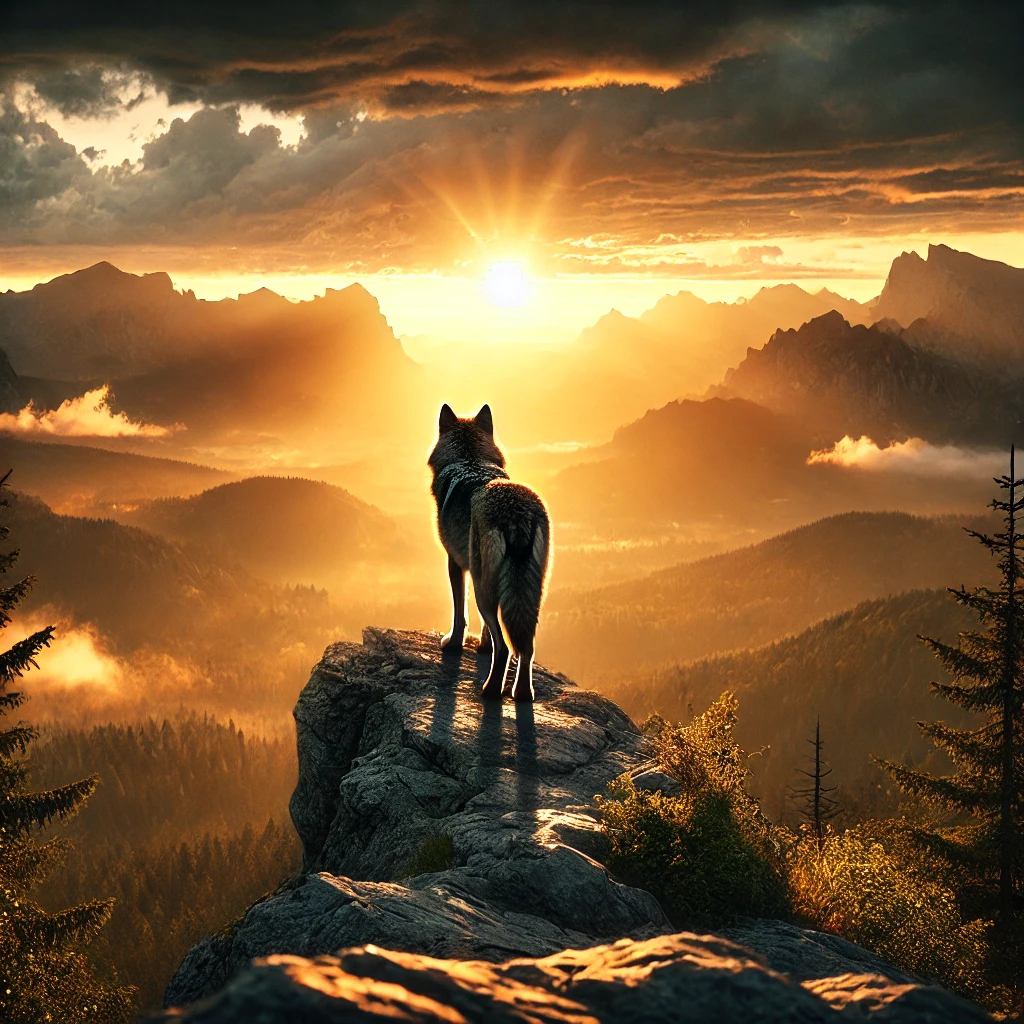In a small village nestled between towering mountains, there lived a man named Orin. He wasn’t the strongest, nor the fastest. He was not particularly gifted with words, and in a world that seemed to value the loud and the bold, Orin often found himself on the edges, quietly observing the hustle of life from the shadows. Yet, for all his unremarkable traits, there was one thing that set Orin apart from the rest: his unwavering courage.
Orin's life was not one of easy roads or soft landings. From a young age, he learned the sting of solitude. His parents had passed early, leaving him to navigate the world with nothing but his will. He built his own home, fished his own meals, and walked alone in the forests while the rest of the village gathered for warmth and company. Some thought him distant, others believed him odd. But Orin knew something they didn’t – solitude sharpened the mind, and courage filled the soul.
One year, when the first frost of winter settled, a great danger loomed over the village. A beast, long thought to be a myth, began attacking livestock, leaving the villagers in fear. The elders spoke of its fangs, sharp as spears, and its hunger, relentless. Each night, the beast crept closer, its growls echoing through the valleys. The people cowered, too afraid to act. They organized meetings, argued about plans, and debated strategies. But for all their talk, no one stepped forward to confront the monster.
No one, except Orin.
He had heard the whispers, watched the panic grow like a creeping vine. Courage, he had learned, wasn’t about being fearless. It was about moving forward despite the fear that threatened to paralyze you. While others sought to escape danger, Orin embraced it, understanding that some battles must be fought not because victory is certain, but because facing the challenge is the right thing to do.
And so, on the coldest night of winter, Orin prepared. With nothing but a spear he had carved himself and a small torch, he left the village behind and walked into the mountains. The air was bitter, and the wind howled through the trees like a warning. Every step forward was met with the heavy weight of doubt. But Orin’s heart was steady, and his purpose was clear.
As he reached the edge of the forest, he found the beast. It was larger than he had imagined, its fur black as night, eyes glowing like embers. Its growl reverberated through the earth, yet Orin did not falter. He had come to face the beast, not to run.
They stood, predator and prey, for what seemed like an eternity. But something shifted in that moment. The beast, sensing something different in Orin, did not attack. It paced, growled, but did not lunge. For the first time in its life, it had met a creature that did not flee from fear.
In that stillness, Orin understood what few ever do – courage was not always about defeating your enemy. It was about standing firm, facing the unknown, and refusing to yield. It was about knowing you might not survive the encounter, but choosing to face it anyway.
The beast, after what seemed like an age, turned and vanished into the shadows. Orin lowered his spear, his breath steady. He hadn’t struck a blow, yet somehow, he had won.
When Orin returned to the village the next morning, there were no cheers, no songs of praise. Few even knew he had gone. But the attacks stopped. The beast was never seen again. And while the villagers continued their lives, busy and loud as ever, Orin returned to his quiet solitude, unchanged on the outside, yet profoundly different within.
Because courage is like that – invisible to most, unnoticed in the crowd. It doesn’t seek attention or validation. It doesn’t need trophies or applause. Courage is a quiet weapon, wielded by those who understand that the hardest battles are often fought within, in the silent moments of decision, when no one is watching.
And those who carry it – they are the strongest of all.
---
The story of Orin reminds us that true courage isn’t flashy. It isn’t about being the loudest or the most heroic in the eyes of others. It’s about standing firm when fear closes in, about choosing the difficult path because it’s the right one. Courage, after all, is the ultimate weapon, not because it guarantees victory, but because it transforms the one who wields it.
















